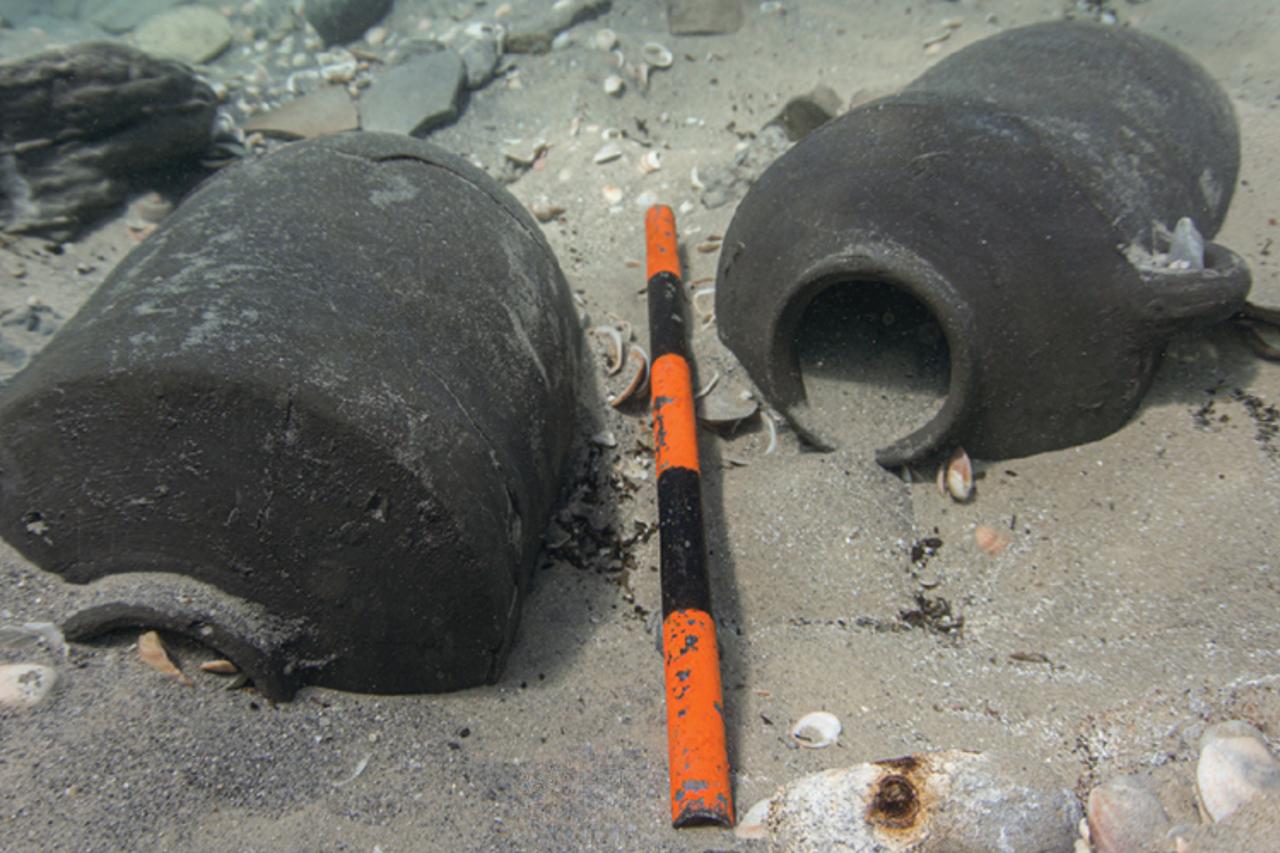
Three newly excavated shipwrecks at Dor, a key port on Israel’s Carmel Coast, are offering the first direct evidence of maritime cargoes from the Iron Age ever found in a harbor context in Israel. Dated between the 11th and sixth centuries B.C., these finds reveal how trade ebbed and flowed during periods of regional upheaval and imperial expansion in the eastern Mediterranean.

Archaeological records from this era rarely include intact ship cargoes, particularly near known port cities. The new discoveries—identified as Dor M, Dor L1, and Dor L2—mark the first time Iron Age cargoes have been uncovered in situ at an anchorage and port site on the southern Levantine coast.

They help reconstruct long-lost maritime trade routes and illuminate how ancient societies adapted to political shifts over the course of nearly 500 years.

Dating to the seventh or early sixth century B.C., the most intact of the cargoes, Dor L2, includes Cypriot basket-handle amphorae and iron blooms—substantial metal masses used in early metallurgy. The cargo appears to represent trade during the Assyrian or Babylonian control of the city, when Dor was strategically handed over to Phoenician rulers as part of imperial agreements. The amphorae likely carried wine or other goods, while the iron blooms, which weighed between 5 and 10 kilograms each, indicate industrial-level transport of raw materials.
The wreck also yielded a rare wood-and-lead composite anchor and several volcanic and sedimentary ballast stones not native to the Israeli coastline, suggesting distant trade connections.

The earlier Dor L1 cargo, from the late ninth to early eighth centuries B.C., featured Phoenician-style storage jars and shallow ceramic bowls. Though Dor had fallen under the control of the Kingdom of Israel and was showing signs of economic decline—such as a drop in monumental construction and reduced imports—this assemblage proves that maritime activity continued.
Finds from this wreck, including a stone anchor and repaired kitchenware, suggest the daily life of sailors and the transportation of bulk goods, likely within a more localized Levantine network that excluded Egypt and Cyprus.

The oldest cargo, Dor M, dates to the eleventh century B.C. and includes rare Iron I storage jars, a ballast pile, and a one-hole stone anchor engraved with Cypro-Minoan script. These finds suggest early maritime trade with Egypt and Cyprus in the wake of the Late Bronze Age collapse. Multispectral imaging revealed a painted numeral in Egyptian hieratic script on one of the jars, further linking this cargo to Egypt.
The port of Dor, then under local Sikel rule, likely served as a hub for this emerging network. References to Dor’s prominence appear in the Report of Wenamun, an Egyptian narrative describing a voyage through ports of the Eastern Mediterranean.

Each of the three cargoes reflects different political and economic phases in the region. Dor M captures a moment of trade revival, Dor L1 depicts continuity under Israelite rule, and Dor L2 embodies a re-expansion of networks during imperial oversight.
Despite fluctuating political control and sea-level rise that eventually submerged key port structures, maritime trade at Dor endured for centuries.